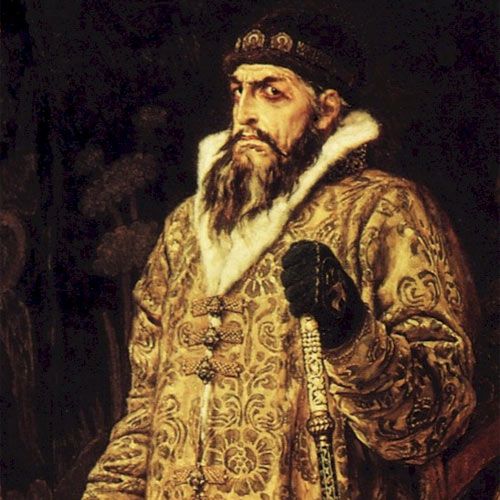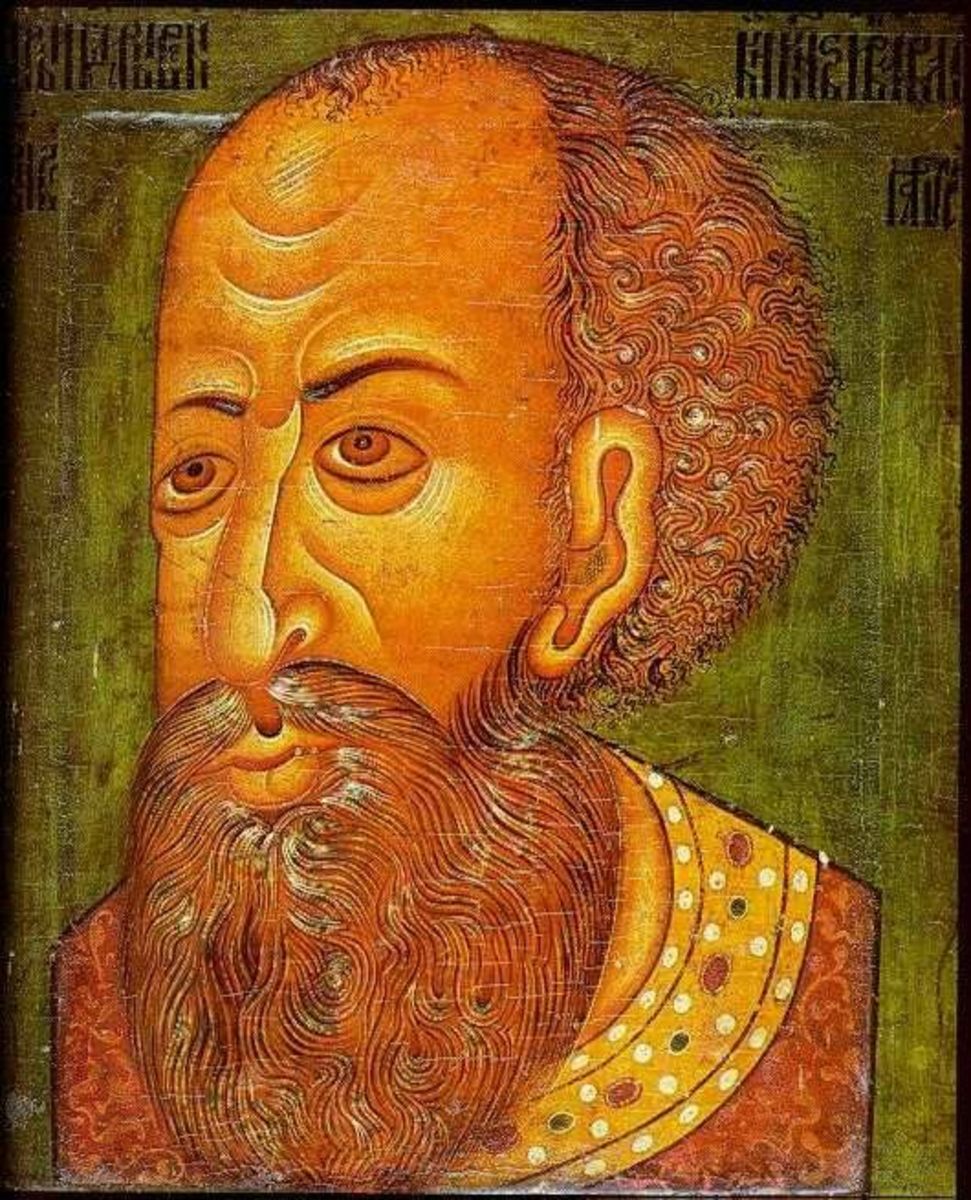THE SECOND BEAST: And behold, another beast, a second one, like a bear.
This is Russia:The Russian Bear is a widespread symbol (generally of a Eurasian brown bear) for Russia, used in cartoons, articles and dramatic plays since as early as the 16th century, and relating alike to the Russian Empire, the Soviet Union and the present-day Russian Federation.
The bear is not, and never was, an official symbol of Russia. Officially, Russia’s coat-of-arms is the double-headed eagle
In the West, Russia was associated with the bear, but that was more of a derogatory association — an uncouth backwards bully from the deep woods. More recently Russians began to take a measure of pride in this association, but for the opposite reason — the strength, intelligence, fearlessness and cunning. To the point where the parliament was considering making the bear the Russian coat-of-arms after the dissolution of the USSR, but in the end — the two-headed eagle of the old Russian Empire has won.
So why is Russia the Bear? AGAIN:
The Russian Bear is a widespread symbol (generally of a Eurasian brown bear) for Russia, used in cartoons, articles and dramatic plays since as early as the 16th century, and relating alike to the Russian Empire, the Soviet Union and the present-day Russian Federation.
So what was going on in the 16th century that God needed to make us aware of through our beloved prophet Daniel? God called Russia the Bear but that was not its national symbol, yet the Bear has stuck no matter what. God is no Joke!
RUSSIA IN THE 16th CENTURY. ... Meanwhile in 1533 Ivan IV, also known as Ivan the Terrible inherited the throne of Russia. However he was only 3 years old and he did not obtain power until 1547. He was crowned Tsar, a word derived from the Roman Caesar. ROMAN INFLUENCE.
The first to be called Tzar formally of Russia:
The Muscovite ruler was recognized as an emperor by Maximilian I, the emperor of the Holy Roman Empire in 1514. However, the first Russian ruler to be formally crowned as «ЦР҃Ь ВСЕꙖ РУСИ» ("Tsar of all Rus'" or "Tsar of all Russias") was Ivan IV, until then known as Grand Prince of all Rus' (1547)
God has called Russia a Bear and it has stuck. Considering the two headed eagle is man's choice, it is interesting that it is God's choice which has endured;). Men are going to learn that God is and there is NO GOD but our God. I can assure every man and every religion that the God of Israel is the One True God and no other religion has ever called all this ahead of time!
"Ivan the Terrible" what did he do to get this name?
Ivan the Terrible, or Ivan IV, was the first tsar of all Russia. During his reign (1533-1584), Ivan acquired vast amounts of land through ruthless means, creating a centrally controlled government.
Synopsis
The grandson of Ivan the Great, Ivan the Terrible, or Ivan IV, acquired vast amounts of land during his long reign (1533-1584), an era marked by the conquest of the khanates of Kazan, Astrakhan and Siberia. Ivan the Terrible created a centrally controlled Russian state, imposed by military dominance. Many believe him to have been mentally ill. One of his violent outbursts was perhaps the reason for his son's death.
Early Life
The first tsar of all Russia, Ivan the Terrible, or Ivan IV, had a complex personality. Intelligent yet prone to outbreaks of uncontrollable rage, Ivan's tragic background contributed to his infamous behavior. Not a lot of detail is known about his early life, and historians debate his accomplishments as a leader. However, it is generally agreed that his reign established the current Russian territory and centralized government for centuries to come.
The grandson of Ivan the Great, Ivan the Terrible was born Ivan Chetvyorty Vasilyevich on August 25, 1530, in the Grand Duchy of Muscovy, Russia, to members of the Rurik dynasty. His father, Basil III, died when he was 3 years old. His mother, Elena Glinskaya, ruled as regent until her death in 1538, when Ivan was 8. During this time, the realm rapidly degenerated into chaos as rival boyar (noble) families disputed the legitimacy of her rule.
The court intrigue and constant danger that Ivan was exposed to while growing up molded much of his ruthless and suspicious nature. Evidence indicates that Ivan was a sensitive, intelligent boy, neglected and occasionally scorned by members of the nobility who looked after him after his parents' death. The environment nurtured his hatred for the boyar class, whom he suspected of being involved in his mother's death. He reportedly tortured small animals as a boy, yet still managed to develop a taste for literature and music.
Tsar of Muscovy
In 1547, Ivan IV was crowned tsar of Muscovy. That same year, he married Anastasia Romanovna. In 1549, Ivan appointed a council of advisers, a consensus-building assembly who helped institute his reforms. During what is considered the constructive period of his reign, he introduced self-government in rural regions, reformed tax collection, and instituted statutory law and church reform. In 1556, he instituted regulations on the obligations of the boyar class in service of the crown.
In foreign policy, Ivan IV had two main goals: to resist the Mongol Golden Horde and to gain access to the Baltic Sea. Ultimately, he aimed to conquer all remaining independent regions and create a larger, more centralized Russia.
In 1552 and 1556, Ivan's armies crushed the Tartar khanates of Kazan and Astrakhan, respectively. This extended Muscovy control to the Urals in the east and the Caspian Sea in the south, creating a buffer zone against the Mongols. (Ivan commissioned St. Basil's Cathedral in Moscow's Red Square, built between 1555 and 1561, to commemorate the conquest of the Tatar city of Kazan.) Ivan was not as successful, however, at annexing Lithuania and gaining access to the Baltic: One of his advisers defected to Lithuania and led its army to defeat Ivan IV's offensive.
While his initial efforts were successful, Ivan the Terrible's methods disrupted the economy and culture. He seized private lands and redistributed them among his supported, and created a police force dressed all in black, astride black horses, that existed more to crush dissent than to keep the peace. Thusly, Ivan was not a popular leader, and his unpopularity would continue to grow over the next several years.
Reign of Terror
Upon the death of his first wife in 1560, Ivan IV went into a deep depression and his behavior became more erratic. His suspicion that she had been murdered by the boyars only deepened his paranoia. He left Moscow suddenly and threatened to abdicate the throne. Leaderless, the Muscovites pleaded for his return. He agreed, but on the condition that he be granted absolute power of the region surrounding Moscow, known as the oprichnina. He also demanded the authority to punish traitors and law breakers with execution and confiscation of property.
Over the next 24 years, Ivan IV conducted a reign of terror, displacing and destroying the major boyar families in the region, and earning the moniker by which he's now best known. (He's also known by the nickname "Grozny," which roughly translates as "formidable or sparking terror or fear.") It was during this period that Ivan beat his pregnant daughter-in-law, causing a miscarriage, killed his son in a subsequent fit of rage, and blinded the architect of St. Basil's Cathedral. It was also during this time that he created the Oprichniki, the first official secret Russian police force.
Death and Aftermath
In 1584, with his health failing, Ivan the Terrible became obsessed with death, calling upon witches and soothsayers to sustain him, but to no avail. The end came on March 18, 1584, when Ivan died of an apparent stroke. He had willed the kingdom to his unfit son, Feodor, whose rule spiraled Russia into the catastrophic Time of Troubles, leading to the establishment of the Romanov Dynasty.
When Ivan the Terrible died, he left the country in disarrary, with deep political and social scars. Russia would not merge from the chaos until the reign of Peter the Great more than a century later.
Russian filmmaker Sergei Eisenstein's two-part epic about the infamous leader, Ivan Groznyi (1945, 1958), is considered one of the finest films of the Soviet era.
Ivan the Terrible was a Tyrant who lived up to his name. He was a hypocrite, doing all his evil while proclaiming to believe in God and Mother Church. He gained MUCH land and created a great empire through Blood shed: 5 And behold, another beast, a second one, like a bear. It was raised up on one side; it had three ribs in its mouth between its teeth; and it was told, ‘Arise, devour much flesh.’
Russia was about to collapse with Ivan The Terrible on the scene. It would have toppled over during his reign, (hence, why it was raised up on its side).
Ivan the Terrible saw himself as God On Earth!
The relevance of this is to show how God calls it THOUSANDS OF YEARS BEFORE HAND. All Glory to God!
To be continued.......




